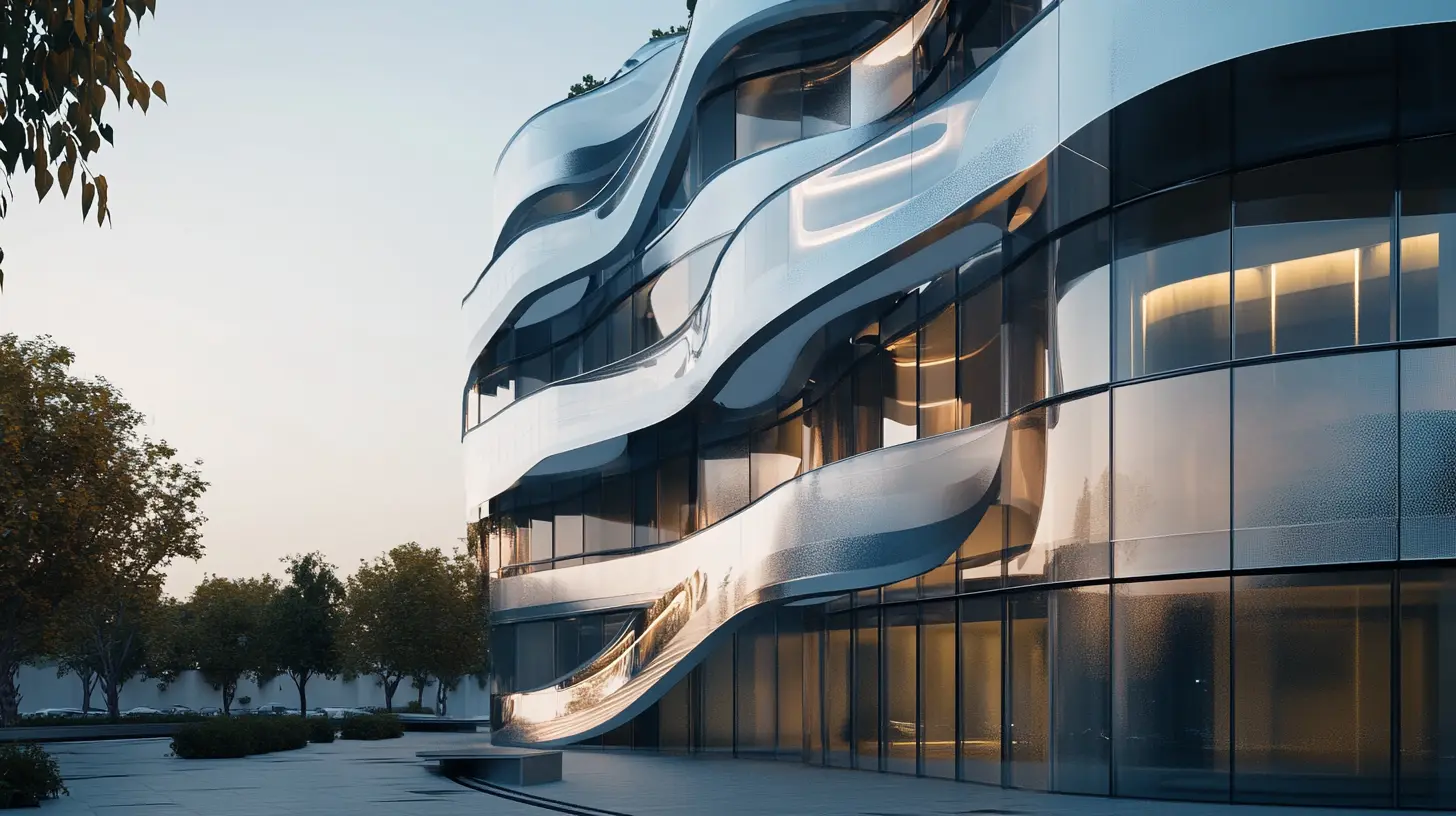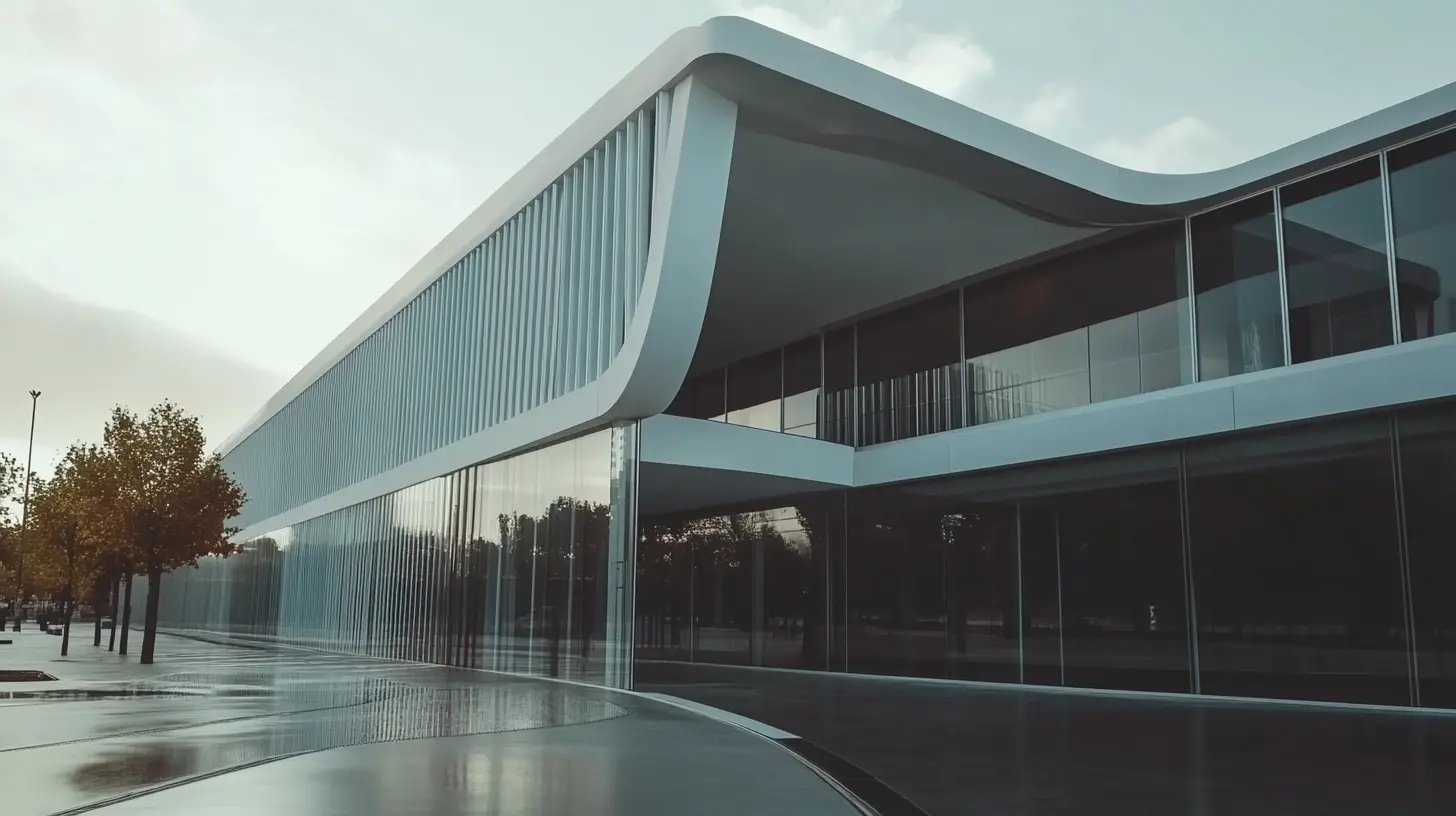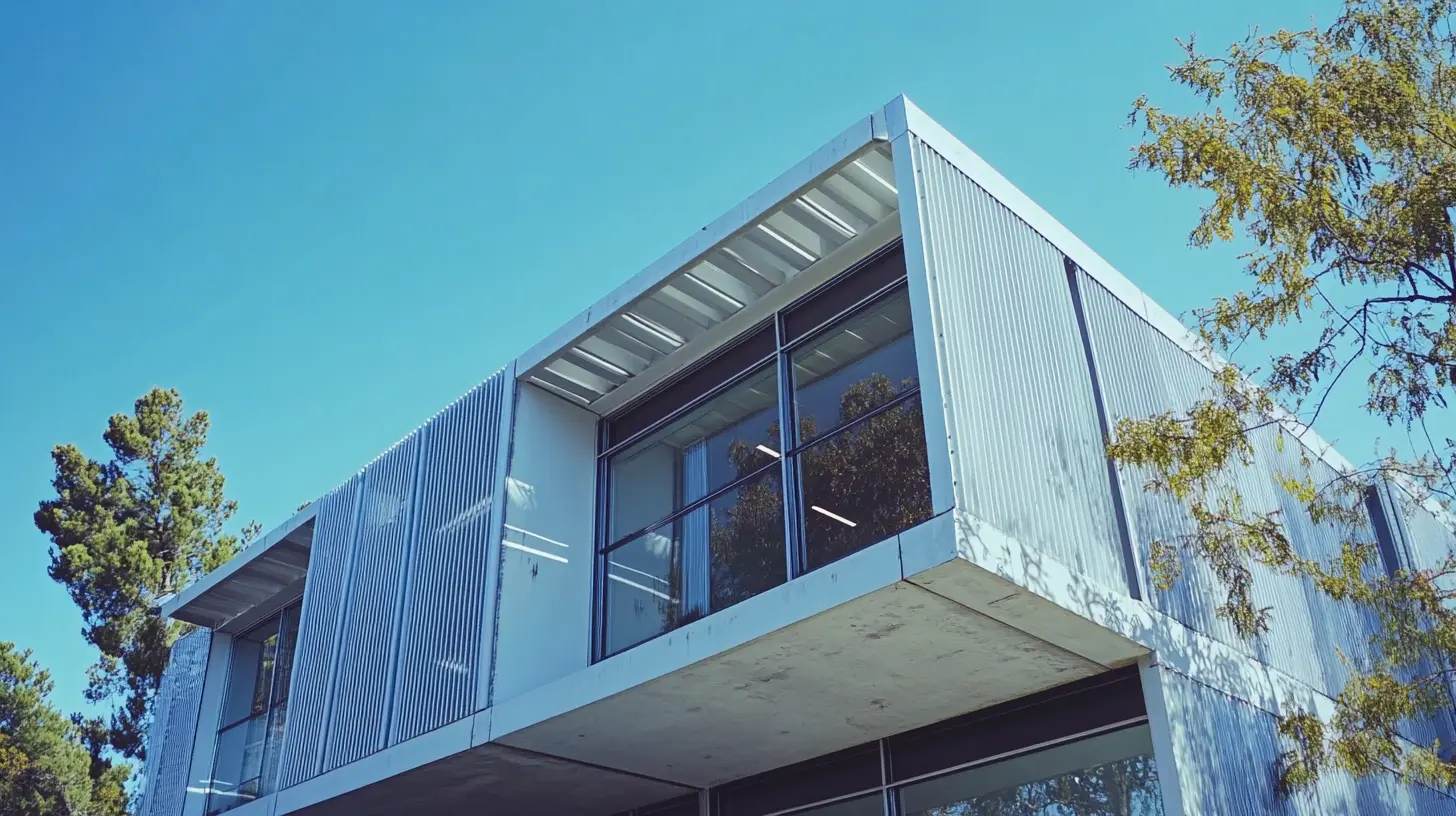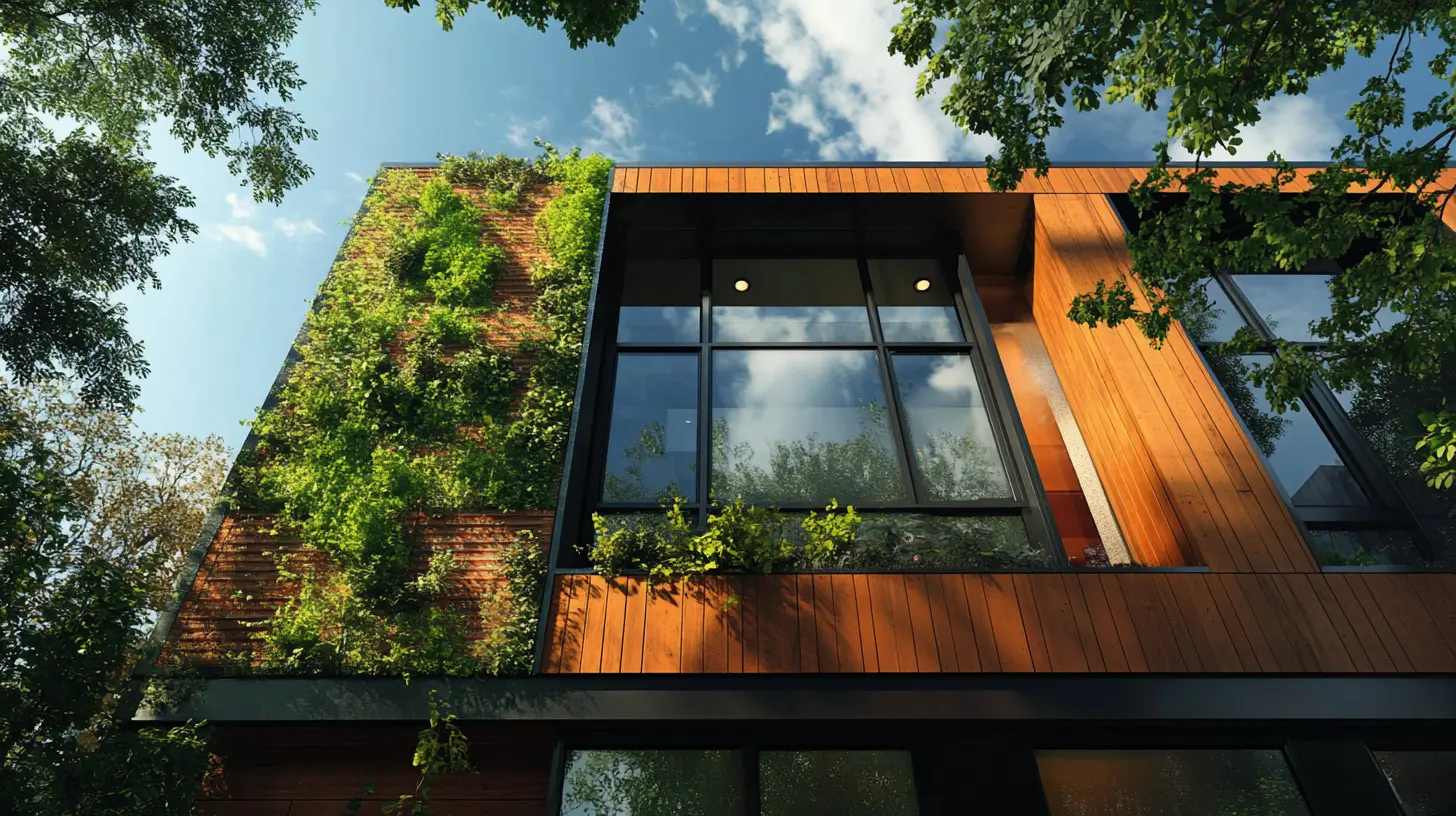Leave Your Message
Shandong Eco Decoration was established at the heights of the architectural revolution with a goal to integrate research and development, design, production, and sale of high-grade materials for cladding. The company prides itself in the export sector, supported by rich experience in foreign trade. The product range includes WPC indoor and outdoor solutions, wood veneer, UV boards, WPC decking, acoustic panels, SPC flooring, and many more. Thus Shandong Eco Decoration, by using innovative technologies and sustainable practices, seeks to provide architects and designers with advanced materials like plastic cladding exteriors, which can enhance and stabilize contemporary buildings from an aesthetic and structural viewpoint.

The increasing presence of plastic cladding in modern architecture has been nothing short of revolutionary when it comes to sustainable building solutions. Whereas natural cladding materials have typically been wood, metal, or stone, plastic is able to confer many benefits precisely relevant to today's ecological concerns. Plastic cladding made from recycled materials or designed for recyclability severely minimizes the ecological footprint of buildings. Another major advantage of plastic cladding is its lightweight quality; reductions in transport costs, emissions, and installation complexity directly translate into shortened building times and reduced labor costs. Plastic cladding is also eco-friendly and, most importantly, offers architects tremendous flexibility in design. With a full palette of colors, textures, and finishes available, plastic cladding can allow for truly imaginative work: turning buildings into stunning landmarks. Mimicking traditional materials or shunning them in favor of an overtly modern aesthetic, plastic cladding can accommodate virtually any architectural style and still provide durability and resilience. Innovations such as UV resistance and thermal insulation make it an even more attractive option-a sustainable choice indeed but also a smart one. With sustainability at the very heart of architectural discourse, plastic cladding presents a most auspicious counterpart to green building. It earns this acclaim by being able to save energy in its production and dispose of another waste along its lifecycle, thus addressing one of the most pertinent challenges of contemporary designing. The increasing acceptance and application of plastic cladding within modern architecture thus hint toward a momentous shift in accepting innovative materials that look after their environment while walking away with aesthetic beauty.

Plastic Cladding exteriors for buildings are gaining popularity among modern architects for reasons beyond mere amenity. The advent of intelligent materials have brought about futuristic dreams, where architects have the opportunity to provide an entirely different aesthetic in textures, colors, and finishes to infuse the building beyond imagination. From sleek, glossy fa?ades to textures that mimic nature, plastic cladding permits an architect to design uniquely striking imaginations that can stand out in urban landscapes.
Some of the currently active projects worldwide clearly demonstrate the aesthetic versatility plastic cladding can offer. Architects push the layering techniques to dynamic visual effects that transform with the daily cycle of light. Such diversity facilitates unusual readings that can resonate to the cultural context of a place as well as performance and durability. Not least as current architectural trends have shown, is the use of plastic cladding in combination with sustainable practices such as energy-saving insulation. Increased profile without compromising aesthetic integrity.
The fires that have recently ravaged cities across the world have once again underscored the need for safety in architectural materials. Most debates on fire safety concern conventional materials but with the advent of plastic cladding technology, fire-resistant plastic claddings are available. For this reason, an architect can now exploit the aesthetic versatility that plastic cladding offers but still comply with fire codes thereby ensuring that modern architecture appeals not only to the eye but also to public safety at a time when increased scrutiny has been directed towards building materials due to such incidences.

Contemporary architectural thought undoubtedly has an alarming curiosity about sustainable design, which in turn translates to innovative uses of materials that meet sustainability tests and design expressions. Advanced plastic cladding materials are gaining ground in this respect, creating bold exteriors and advancing energy efficiency- if designed according to the right specifications. Thus, architects now minimize heat lost in winter and prevent heat gain in summer by using high-pr-performance plastic cladding materials, hence reducing energy for heating and cooling.
Advanced plastic cladding materials are engineered for enhanced thermal insulation compared to traditional cladding. These include the insulating core and reflective exterior surfaces, which help maintain comfortable temperatures in the internal environment. In addition to this, lightweight plastic clamping has the upper hand over the heavy cladding materials in terms of installation, which greatly cuts labor costs of construction. Added to this is the durability of the cladding material that resists every possible negligent act from nature, thus being an environmentally friendly option for modern constructions.
The different colors and textures of plastic cladding only add more potential for creativity for architects. This versatility gives designers freedom to create unique building facades in line with their design concepts while facilitating energy efficiency. As sustainability becomes a watchword of modern architecture, advanced plastic cladding materials are presented as a suitable and inventive solution in enhancing the beauty and performance of contemporary structures.

Plastic cladding has become a very popular element in the exteriors of modern architecture, offering novel color and format possibilities of a completely new kind in the urban scene. With plastic materials, architects can now unshackle themselves from all forms of design restraints to introduce splendid colors and textures within their buildings, which are not only aesthetically appealing but also functional and sustainable.
An example of contemporary architecture and design is the newly opened U.S Embassy in London, which showcases extreme experimentation with conventionally understood 'building material.' The sleek exterior of this multi-billion dollar building demonstrates just how innovative cladding systems can create a new identity of a building. Such buildings have such smooth surfaces and sharp lines that they may be made inviting but demand attention at the same time; that reflects a contemporary mantra, within a very old ground.
Thus, as architects continue to explore plastic cladding's newest experimental usages, these forms take on increasingly flowing shapes and patterns that mirror the textural richness of nature to produce an art-engineered blend. It opens up even more spatial transformation beyond functional conditions toward experiential conditions creation and setting. As cities develop, the precious nature of the fresh and novel offerings of architectural design made by the plastic cladding becomes all the more apparent, proving that aesthetics can be coupled with innovation in marking the future.
Plastic cladding seems to be an important feature in modern architecture, more so to support structural durability. The recent spate of fire accidents threatening buildings across different parts of the world-open discussions in the area of fire behavior of cladding material-for instance, the rather unfortunate incidences that took place recently in London. Meanwhile, fire-resistant properties are the much-needed attributes for any building plastic cladding, as they considerably help minimize risk and keep the building well protected without compromising beauty.
Plastic cladding therefore permits the innovator free use beyond safety regulations. Lightness of fairly plasticky design is yet another attraction for architects eager to raise aesthetic façades and yet insist on being minimally obstructive from a structural standpoint. In addition, safety regulations exist for fire-retardant plastics so that these materials will aid in fighting fire damage and loss-respectfully witnessed as commenting tones in recent incidents around various cities.
Durability in itself forms another pillar of sustainability for plastic cladding. It withstands the environmental onslaught of conditions, from moisture to UV degradation, capable of ensuring that embedded architecture retains its charter. The beautiful applications proposed speak to the fact that plastic cladding is obligatory-judging from aesthetic perspectives-through a critical spectrum interjected as being safety-oriented in all design and engineering concerned with resilient architecture.
This material has emerged as quite popular for the newest schemes in architecture. The resulting combinations of aesthetic and functional manipulation add another level of interest. Investigating some renowned case studies using plastic cladding provides insight into the material's more extraordinary applications and benefits. For example, Chicago's McCormick Place cladding system combines colorful polycarbonate panels that allow the penetration of natural light and display a lively facade. This mixture of function and aesthetic appeal demonstrates that plastic cladding is a means to redefine structural aesthetics.
Another interesting example is the Bibliotheca Wittockiana in Brussels, which uses acrylic for some fantastic cladding. This vivacious envelope adds further visibility to the structure within the city and provides some energy benefits. According to the International Journal of Architecture and Urban Developments, the insulating capacity of such structures featuring plastic cladding can be partly enhanced by 20%, hence considerably saving energy for sustainability.
In LaGuardia Airport Terminal B in New York City, exterior cladding is accomplished with rather advanced composite materials that underscore durability and maintenance convenience. The terminal is designed with the passenger's use in mind along with environmental issues, thus illustrating how plastic cladding helps with the modern challenges of infrastructure. Industry reports suggest that the use of plastics in construction can be expected to grow by 5 per cent per annum; such is its growing acceptability in various aspirational applications. The changing face of building design and performance, plastic cladding is certainly one of the most transformative ingredients for contemporary architecture.
Apparently, experts in other fields have found that plastic cladding is a better outdoor option in the modern architectural scenario, but the fact is that it bears so much stigma. Contrary to that, perceptions are that plastic cladding would lack durability and aesthetics, which makes the materials inferior in the eyes of many professionals. Citing projection by the Global Plastic Cladding Market report, the demand for the plastic cladding materials is expected to grow at a CAGR of 6.5% for the years 2020-2028-sparked by innovative technology and heightened consumer awareness of sustainable solutions. In spite of this growth, architects and builders must put in active efforts to counter the strain of misconceptions that often shadow benefits of these materials.
Most importantly, stigma against plastic cladding lies in the realm of fire safety; the public's fear of cladding resulted from the Grenfell Tower tragedy in 2017, which revealed the dangers of certain cladding materials and resulted in more severe regulations and furor around the topic. Nevertheless, fire-retardant plastic composites have come a long way in developing safety features. "Compliant modern plastic cladding can now meet very stringent fire safety standards," the 2020 report from NIST added, providing a safer alternative to designers that satisfies functionality while addressing aesthetic concerns.
The perception of plastic cladding as unattractive has experienced a paradigm shift. The deployment of cutting-edge design methods and the introduction of top-quality finishes have allowed architects to become creative with regard to plastic cladding, resulting in striking facades. According to a research conducted by the Architectural Institute of America, 60% of architects stated an increase in project interest when new designs with modern plastic cladding are presented, demonstrating the redefining capability of the material in the aesthetics of architecture. Educating the stakeholders in a continuous manner regarding technological advances and successful case studies is an avenue where the architectural community can bring a re-evaluation of the worth of plastic cladding in modern design.
Plastic Cladding is a Future Perspective for Modern Architecture in Terms of New Innovations while Events Create a Break Through in Thinking Safety and Performance of Any Kind of Building Material. The image of urban centers confronting more future challenges, especially in fire safety such as London, shows how much will be thrown to innovative technologies for plastic cladding. Smithers Pira's recent report on the value of global plastics cladding states that it will increase to about $8.3 billion by 2024, growing with a compound annual growth rate (CAGR) of 5.6%. Growth suggests a new movement towards materials that offer aesthetic appeal to safety.
Emerging technologies such as fire-resistant coatings and insulation properties have specific importance in terms of safety innovation into the architecture. These developments will thus ensure that all plastic claddings conform strictly with the most stringent regulations and do create vertical environments for the residents of cities. Place smart materials that respond to changes in their environment directly to the idea of considering plastic cladding as a solution for modern buildings. Reports show that adding such technologies decreases energy consumption by up to 25%, thus satisfying global goals for sustainability and adding aesthetics.
Plastic cladding, the new dimension in city making possible by architects and builders, will continue to mark new boundaries into which they will have yet more imaginative forays, especially where innovative technologies and safety regulations are concerned. The future of plastic cladding in architectural practice is, therefore, vast. The industry is at a crossroads on its journey about how traditional materials might evolve to fit modern needs and eventually transform how we see exteriors in building construction.
Plastic cladding is fast becoming a material of choice in modern architecture and is claimed to be, both very flexible and creative. Lighter in weight and durable, plastic cladding is very appealing to use for residential and commercial projects alike. It is important that with growing use comes an increasing and critical assessment of the environmental impact of such material. As per the Global Sustainability Assessment for Building Materials (GSABM), plastic materials are beneficial in many ways, but they can do a world of harm to the environment when not taken care of in the right manner.
Perhaps the most contentious issue concerning plastic cladding is that of pollution potential. An Ellen MacArthur Foundation report indicates that as much as 80 million tons of plastic are wasted into the seas every year and this demonstrates how quickly and badly the planet's oceans are affected by the poor production and disposal practices. It is because of this ecological emergency that architects and builders have now included LCA in their decision-making processes when selecting materials. Typically, when evaluated in a properly conducted life cycle assessment, some alternatives like wood or metals might have less environmental footprint than some plastics; this means that economic consideration and aesthetics alone cannot dictate the choice of cladding.
In addition, energy efficiency in buildings clad in plastics is double-edged. As reported by the IEA, insulated plastic cladding brings about great energy savings of up to 30% in heating and cooling demand but even then must take into account the energy consumed in the production of such cladding. Hence, waste elimination due to sources of recyclable plastics and a transition to circular economy principles is paramount in reducing the adverse effects that plastic cladding would have on the environment. Innovative material science now has promising future approaches to developing biodegradable and recycled plastic cladding, which minimizes environmental impact.
Whether the practice involves seeking greener technology in architecture, interior architecture, or other types of construction, it shall always be relevant to and the best for the improvement of quality and character of living on Earth.
Modern architecture integrates biophilic design with plastic cladding as very convincing qualities, both in terms of aesthetics and functionality. Biophilic design emphasizes a link to nature in built environments, where very easily one becomes acquainted with architectural elements due to the pluralistic use of plastic cladding-with much added benefit of eco-friendly material that not only holds sleeking but contemporanizes but also has architects enforce organic shape and coloring, embraces natural elements as one would enjoy well-being and sustainability.
Among other things, creating dynamic façades by light, weather, and even time of the year as transformation is another applied attribute in modern plastic cladding. Such type of cladding may be able to imitate the textures or colors of nature so that the building itself becomes well merged into the environment, thus harmonizing the building with the landscape. Additionally, as plastic cladding is lightweight, it allows more creative freedom in designing complex forms to entertain daylight and create airflow into well-ventilated interior environments.
Moreover, an implication of natural patterns or motifs through plastic cladding will be reversible according to biophilic design principles for bringing out the natural world. Innovative applications of 3D printing and laser cutting techniques make it possible to carve specific patterns representative of organic forms, such as leaf structures or wave-like configurations. Such artwork is an enhancement of the aesthetics of space while nurturing the emotional aspect of nature, thus transforming the environment into a more welcoming space. The future-perfect combination of plastic cladding and biophilic designs will thus open new vistas for architecture to be in a more sustainable and healthier consideration.
Plastic cladding offers a range of textures, colors, and finishes that allow architects to create unique and striking designs, enhancing the visual impact of buildings and transforming urban landscapes.
Plastic cladding can be used alongside sustainable practices, such as energy-efficient insulation, which not only preserves design integrity but also supports environmental goals.
Yes, advancements in plastic cladding technology have led to the development of fire-resistant options, allowing architects to prioritize safety while enjoying aesthetic versatility.
Absolutely! In addition to aesthetic appeal, plastic cladding contributes to the functionality of buildings, allowing for dynamic forms and improved energy efficiency.
The future is being shaped by innovations in fire-resistant coatings, enhanced insulation properties, and the integration of smart materials that respond to environmental changes, all aimed at improving safety and sustainability.
As urban challenges related to fire safety increase, the development of safer plastic cladding technologies enables compliance with regulations, thus improving the overall perception of safety in modern architecture.
Plastic cladding allows for bold and unconventional designs that can transform the identity of buildings, reflecting contemporary values while fitting into historical contexts.
The global market for plastic cladding is projected to reach $8.3 billion by 2024, indicating a growing focus on materials that meet aesthetic and safety demands.
Advanced technologies enhance the performance and safety of plastic cladding, including better fire resistance and energy reduction capabilities, aligning with global sustainability goals.
Architects can experiment with layering techniques and dynamic visual effects that change with light, allowing for unique expressions that mirror the cultural context of a location.

